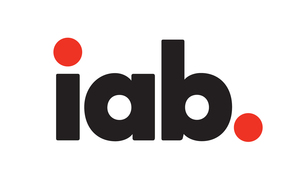The potential for dozens of new state laws and/or pending federal legislation will make reaching audiences harder
NEW YORK, Sept. 13, 2022 /PRNewswire/ -- The state of data will be significantly impacted by new state privacy laws coming into effect in 2023 and legislation that may be enacted in other states in the near future. Given the current trajectory of state-level privacy legislation, and federal legislation now being debated in Congress, managing these different legal standards will be challenging.
That's among the conclusions revealed in IAB's State of Data 2022 Part II: Preparing for the New Addressability Landscape report, commissioned by IAB and executed by MediaScience, which included qualitative, in-depth interviews with 30 senior-level, data decision-makers at brands, agencies, and publishers.
The report, to be released at IAB Audience Connect on September 13, 2022, highlights new privacy legislation, the deprecation of third-party cookies and identifiers, and platform policies that affect data collection, addressability, measurement, and optimization for digital advertising and marketing.
2022 marks the fifth year and sixth installment of this research, which aims to understand market readiness for rapid shifts around data use, privacy and addressability, and provide an overview of scalable solutions brands, agencies, publishers and ad tech firms can adopt today while protecting consumer privacy.
"While Google's decision to postpone the deprecation of third-party cookies until 2024 may feel like a reprieve, the industry is far from off the hook," said David Cohen, CEO, IAB. "The industry is already operating with significantly less signal given the changes by Apple, Firefox, and others. Consumers need transparency and control. We need addressability and measurement solutions that are privacy-by-design and fully compliant with state, Federal, and international standards."
Companies are struggling to keep up — and facing compromises
Creating consistent measures and protocols that work inside their companies and with external partners has become a major issue. In the face of rising complexity, the majority of respondents agree a "one size fits all" approach spanning multiple jurisdictions is probably necessary. But there is a significant trade-off: failing to leverage data that is fully permitted in certain states means lost opportunities.
We can advance privacy and enable advertising to reach the right consumers at the same time, but misguided legislative efforts risk harming both. The IAB Legal Affairs Council plans to roll out an MSPA (Multi-State Privacy Agreement) and Global Privacy Platform through the IAB Tech Lab as solutions.
The goal is a practical multi-jurisdictional approach to compliance that creates consistency where state laws are similar and options when requirements are unique to a state. IAB is ensuring that the essential functions of the ad-supported internet — measurement, frequency capping, engaging in programmatic and contextual ads and utilizing publisher's first party segments when consumers opt-out — still work.
Consumers know what they're giving up, but don't know what they're getting
The senior-level, data decision-makers at brands, agencies, and publishers interviewed for this study agree that consumer trust is paramount. Yet the value proposition for consumers remains unclear. While the industry is better about disclosing what data it will use, it is not doing enough to help consumers understand why gathering their data delivers real benefits.
Myopia about first party data ignores up to 80% of consumers
Investing in deterministic first-party datasets (data from their logged-in, "known" audiences) remains vital. Yet, in most instances this only represents about 20% of potential consumers. Marketers need proven, probabilistic solutions to target and measure the 80% of consumers who are not part of their first party data.
The publishers interviewed were optimistic about the use of Seller Defined Audiences (e.g., custom cohorts) as one solution for addressability. Still, for this to succeed, publishers must do more to drive buy-side awareness and adoption.
Can smaller publishers afford to keep up?
Ironically, privacy legislation may benefit platforms and publishing giants while inadvertently punishing smaller publishers who have small but intensely loyal audiences. While there are a range of third-party tools that can help power data collection and enrichment, only a handful of interviewees have the budgets to test these new approaches. The consensus is that there are too many tools and not enough resources to test or manage them all — particularly among smaller publishers.
"With third-party cookies, the sky has been falling for more than a decade. No wonder there's a deepening disconnect between how prepared senior-level, data decision-makers feel, and how prepared they actually are," said Angelina Eng, Vice President, Programmatic+Data Center, IAB. "But no matter what happens with cookies, the rising tide of patchwork regulation is already here."
Please visit iab.com/state-of-data-2022 for more information about the IAB's 2022 State of Data: Preparing for the New Addressability Landscape report
And don't miss our in-depth discussion on the findings from the report with the State of Data Town Hall Series on October 18 (State of Data Town Hall: The New Privacy Landscape) and November 15 (State of Data Town Hall: Data Collection and Addressability).
About IAB
The Interactive Advertising Bureau empowers the media and marketing industries to thrive in the digital economy. Its membership comprises more than 700 leading media companies, brands, agencies, and the technology firms responsible for selling, delivering, and optimizing digital ad marketing campaigns. The trade group fields critical research on interactive advertising, while also educating brands, agencies, and the wider business community on the importance of digital marketing. In affiliation with the IAB Tech Lab, IAB develops technical standards and solutions. IAB is committed to professional development and elevating the knowledge, skills, expertise, and diversity of the workforce across the industry. Through the work of its public policy office in Washington, D.C., the trade association advocates for its members and promotes the value of the interactive advertising industry to legislators and policymakers. Founded in 1996, IAB is headquartered in New York City.
SOURCE Interactive Advertising Bureau (IAB)

WANT YOUR COMPANY'S NEWS FEATURED ON PRNEWSWIRE.COM?
Newsrooms &
Influencers
Digital Media
Outlets
Journalists
Opted In



Share this article